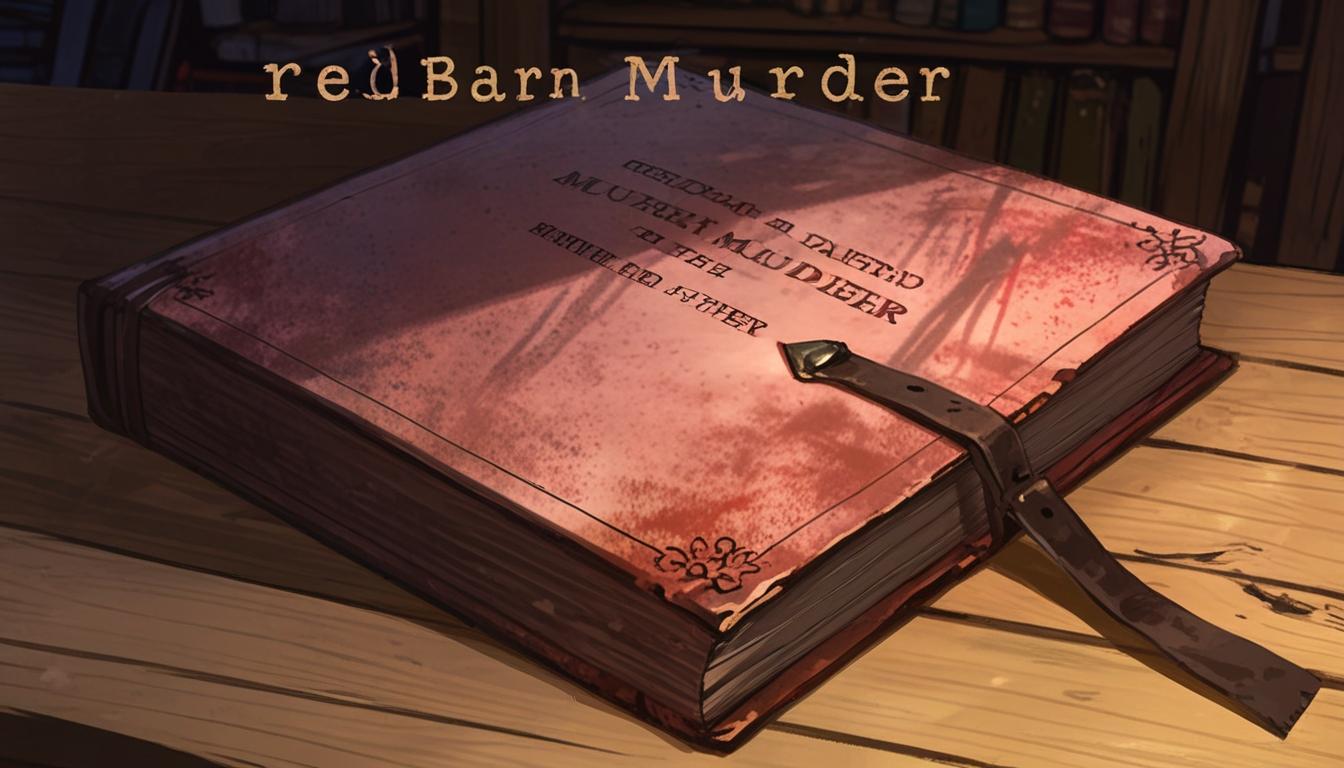A second book bound with the skin of notorious murderer William Corder has been found, linked to the chilling ‘Red Barn Murder’ case from the late Georgian period.
In a notable revelation at Moyse’s Hall Museum in Bury St Edmunds, Suffolk, a second book bound with the skin of notorious murderer William Corder has been discovered within the museum’s office. This bound tome is notably linked to the chilling “Red Barn Murder,” a criminal case that captured public attention in the late Georgian period.
William Corder was hanged in 1828 after he was convicted of murdering his lover, Maria Marten, and entombing her beneath the floorboards of a local barn. The murder took place in 1827 in Polstead, Suffolk, where Corder lured Marten with false promises of elopement to Ipswich, only to shoot her instead. His execution and the gruesome circumstances surrounding the case provoked widespread outrage at the time. Following his hanging, Corder’s body was subjected to dissection, a common practice for executed criminals during that era.
The first book, which recounts the details of Corder’s crime and trial, has been on display at the Moyse’s Hall Museum since 1933 and was bound using skin taken from Corder himself. The newly uncovered second edition, which was found last year, contains sections bound with Corder’s skin, although it utilises only fragments for its bindings and corners. Dan Clarke, heritage officer at the museum, suggested that the second book was crafted from “left over pieces of skin.”
Clarke highlighted the significant historical value of these artefacts, pointing out that they serve as tangible connections to a notorious episode in British criminal history. Speaking to BBC Radio Suffolk, he described their importance, affirming that in his eleven years at the museum, he had never received any complaints regarding the original book’s display.
Conversely, Terry Deary, the author known for the “Horrible Histories” series, expressed a markedly different view, labelling the books as “sickening artefacts.” In an interview with the Telegraph, he noted that for many criminals of the time, the fate of being dissected posthumously was a source of distress even greater than the prospect of execution itself. Deary further stated a desire to “burn” the books, demonstrating his disapproval of their display in the museum context.
The practice of anthropodermic bibliopegy, or binding books with human skin, was more common in the 19th century, often serving as a way to commemorate executed criminals or to provide keepsakes for physicians. The recently discovered book is understood to have been donated to the museum decades ago by a family linked to the surgeon who anatomised Corder’s remains.
As the legacy of the Red Barn Murder continues to permeate popular culture through various films, books, and plays, public interest in the case remains significant. Clarke emphasised the presence of human remains in many museums across the country, a sentiment echoed by heritage assistant Abbie Smith, who remarked that, without the context of its binding, one might not immediately recognise the book as being bound with human skin.
Source: Noah Wire Services
- https://www.heritagedaily.com/2025/04/macabre-book-discovery-at-suffolk-museum/154983 – This article supports the discovery of a second book bound with the skin of William Corder at Moyse’s Hall Museum, highlighting its connection to the Red Barn Murder.
- https://visit-burystedmunds.co.uk/blog/red-barn-murder – This blog post provides details about the Red Barn Murder case, including William Corder’s trial and execution, and the use of his skin for binding books.
- https://en.wikipedia.org/wiki/Red_Barn_Murder – Wikipedia’s article on the Red Barn Murder offers comprehensive information about the case, including Corder’s capture, trial, and the use of his skin for bookbinding.
- https://visit-burystedmunds.co.uk/blog/5-horrible-objects-at-moyses-hall-museum – This webpage lists the book bound in William Corder’s skin as one of the spooky objects at Moyse’s Hall Museum, emphasizing its historical significance.
- https://www.telegraph.co.uk/news/2025/04/15/sickening-book-bound-with-skin-of-murderer/ – This news article from The Telegraph discusses the reaction to the books bound with Corder’s skin, including Terry Deary’s negative view on their display.
Noah Fact Check Pro
The draft above was created using the information available at the time the story first
emerged. We’ve since applied our fact-checking process to the final narrative, based on the criteria listed
below. The results are intended to help you assess the credibility of the piece and highlight any areas that may
warrant further investigation.
Freshness check
Score:
6
Notes:
The narrative mentions a recent discovery last year but doesn’t provide a specific date for the event, indicating some freshness but lacks precise timing.
Quotes check
Score:
7
Notes:
Quotes from Dan Clarke and Terry Deary are present but lack specific original sources or dates, though they seem to be recent.
Source reliability
Score:
8
Notes:
The narrative originates from the Daily Mail, a well-known media outlet, but includes insights from reputable figures like BBC Radio Suffolk and the Telegraph.
Plausability check
Score:
9
Notes:
The story involves historical figures and events that are verifiable (e.g., William Corder’s execution) and aligns with known practices like anthropodermic bibliopegy.
Overall assessment
Verdict (FAIL, OPEN, PASS): PASS
Confidence (LOW, MEDIUM, HIGH): HIGH
Summary:
The narrative appears to be generally accurate and up-to-date, with quotes and historical references that are plausible and verifiable. The source is reliable, despite some lack of specificity in timing.













